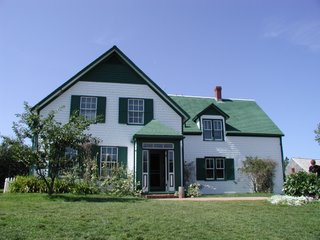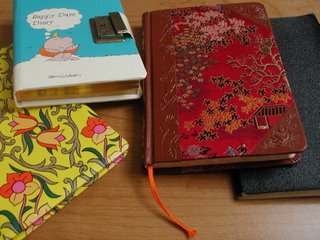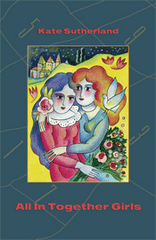I’m in the middle of
A Painter’s Journey: 1966-1973 by Barbara Caruso. I came to it with very little context. I know a bit about the work of Caruso’s husband, poet Nelson Ball, and a bit more about the Toronto small press world of the sixties and seventies of which they both were an important part. But I’m not familiar with Caruso’s paintings.
Nevertheless, I’m finding the book fascinating. It’s essentially a transcription of a journal that Caruso kept in her early years as an artist in which she documented her struggle, both material and creative, to establish herself. Many of the entries, particularly the early ones, are brief and factual. But they are very evocative. For example, the fact that she found it worth noting down in July of 1966 that she could buy three pairs of underpants for her husband for $1.77 at Kresges speaks volumes about the financial difficulties that they faced in devoting themselves to art. And one simple sentence (“I am painting.”) says it all in October 1967 after a couple of months in which painting supplies were hard to come by and self-doubt all too plentiful.
Caruso is an avid reader and she kept a running list of the books she was reading throughout those years. She rarely writes about her responses to them but I find the list itself interesting to contemplate (it includes, for example, works by Samuel Beckett, Ford Maddox Ford, Norman Mailer, William Faulkner, William Burroughs, Robert Creeley, John Dos Passos, Allan Watts, and John Barth), and I very much relate to her habit of working her way through several books by the same writer once the first had hooked her (as she did with Mark Twain, Allan Ginsberg, Joseph Conrad, and William Carlos Williams).
The passages in which Caruso explicitly connects her reading and her painting particularly interest me. For example, in November 1966 when she describes a drawing she did which successfully “implies introspection” based on an idea that she got from Virginia Woolf’s
To the Lighthouse. Or in December 1967 when she writes:
Last night, I sat in front of my painting reading Victor Coleman’s “October Fragments,” poems (in manuscript) that Victor wrote while he was in Vancouver. It was a good experience; I was drawing a comparison between Victor’s poems and my blue painting.
And of course her reading inspires her writing as well. In August 1970, returning to journal-keeping after nearly two years of silence, she writes:
I feel I should write several pages for a first entry. One should get off to a good airy start. I have the example of Mark Twain whose books I’ve been reading, as well as Paul Klee who rewrote his journals four times. The first is a lesson in extravagance; the second, in restraint.
Caruso writes early on about what she terms “[her] verbal approach” of taking notes on each of her compositions “to clarify [her] thinking.” These notes are at the heart of this book and they provide an extraordinary glimpse into the creative process and the evolution of the aesthetic philosophy of a working artist.
I noted at the outset that I’m not familiar with Caruso’s work, but her detailed notes on various drawing and paintings, and her articulations of the ideas that underlie them, give a good sense of it. Here she is in September 1970 responding to a fellow artist’s criticism of one of her paintings:
Milly looked at my big painting. I think she liked it, although she was critical about the grey shape’s relationship to the red shape. She said that the grey shape couldn’t reach the grey-yellow-green shape through the primaries (red and blue). I have given this much thought and I don’t agree with her objection. It appears that she is reading the colours from top left to top right. There is no need to do that; rather, let the colour direct the eye. The eye travels on the intense colours (green, red, blue, and purple) in an arc; and the grey reaches the grey-yellow-green through the large greyed yellow shape when the eye travels on another (inverted) arc.
And in January 1971, remarking on her changing perceptions of colour:
I have become more and more involved with colour in these last three paintings. The nature, the character, even the “personality” of each colour becomes more complex (or should I say simple?). The experience (my awareness) of colour increases as I go on. I’m a little afraid of over-simplification, but it is the [complexity of] simplification that is exciting.
I’m very keen after reading the descriptions to see Caruso’s work first hand (if anyone knows where in Toronto I can see some of her paintings, please let me know) and also to read her collection of essays
Wording the Silent Art.
Caruso’s voice is an honest, uncompromising, funny, smart and deeply thoughtful one. Whatever your artistic medium, whether you situate yourself as a creator or as an audience member, there is much of interest for you in
A Painter’s Journey. I’m coming away from it thinking much more deeply and self-consciously about my creative process as a fiction writer. And I’m feeling inspired to resume keeping a journal of my own.










